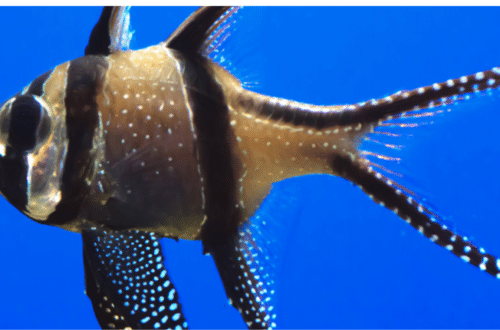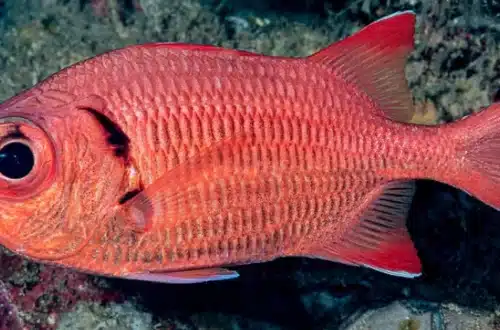Seeing a cluster of tiny eggs suddenly appear in your angelfish tank is exciting! The eggs signify your fish spawned, and you may have baby angels on the way. However, ensuring the delicate eggs fully hatch and survive into free-swimming fry requires special care. Angelfish reproduction and nurturing the eggs correctly give the best odds for success.
This article covers everything you need to know when your angelfish spawns, from identifying viable eggs to incubating them safely, treating fungal infections, separating parents, and more. With the right insights, you’ll witness the remarkable process of angelfish eggs hatching into little wigglers.
The Marvel of Angel Fish Eggs

Angelfish eggs, resembling tiny pearls suspended in water, are a testament to the wonders of nature. These eggs are carefully laid by mature angel fish, showcasing a meticulous breeding process that mirrors the precision of a well-orchestrated dance. Understanding the marvel of these eggs requires a closer look at the intricate world they inhabit.
The Breeding Ritual
The journey of angel fish eggs begins with an elaborate courtship ritual between the male and female counterparts. In a display of vibrant colours and graceful movements, the male angel fish woos the female, culminating in the deposition of eggs on a carefully chosen substrate. This intimate ritual sets the stage for the miraculous creation of life underwater.
The Protective Cocoon
Once the angel fish eggs are laid, they are enveloped in a protective cocoon of parental care. The male and female angel fish safeguard the eggs from potential threats. This nurturing environment ensures the optimal conditions for the unhatched embryos to develop and thrive.
The Hatchling Process
As time progresses, the angel fish eggs undergo a fascinating transformation. The embryos within the eggs develop gradually, and the attentive guardians can witness the emergence of tiny fry. This moment marks the culmination of the breeding process as the angel fish parents revel in the success of their meticulous efforts.
The Angel Fish Habitat Natural Habitat Insights
To comprehend the nuances of angel fish eggs, one must first grasp the natural habitat of these captivating creatures. Angel fish are predominantly found in freshwater environments, inhabiting tropical regions with slow-moving waters. The intricacies of their native habitat significantly influence the breeding behaviours and requirements of angel fish eggs.
Water Quality Considerations
Maintaining pristine water quality is paramount for successfully incubating angel fish eggs. These delicate orbs are highly sensitive to changes in water parameters, emphasizing the need for meticulous aquarium management. Adequate filtration, regular water testing, and temperature control are essential when creating a suitable environment for angel fish eggs to thrive.
Substrate Selection for Breeding
Angelfish, meticulous in their choices, often select specific substrates for depositing their eggs. Smooth surfaces, such as broad leaves or flat rocks, are ideal canvases for attaching angel fish eggs. Aquarium enthusiasts keen on fostering a breeding environment should carefully choose appropriate substrates to mimic the natural preferences of these graceful creatures.
Lighting Requirements
In the realm of angel fish breeding, lighting plays a crucial role. Mimicking the natural daylight cycles experienced by angel fish in their habitat is vital for maintaining their biological rhythms. Adequate lighting not only influences the breeding behaviour but also contributes to the overall health and vitality of the angel fish eggs.
Temperature Regulation
Temperature regulation is a critical factor in successfully incubating angel fish eggs. Maintaining a stable and appropriate temperature within the aquarium is essential for the health and development of the embryos. A slight deviation from the optimal temperature range can profoundly affect the hatching success and the well-being of the angel fish fry.
Tips for Angel Fish Eggs Care
The care for angel fish eggs extends beyond the breeding process into the realm of post-hatching responsibilities. Once the fry emerges, providing an appropriate feeding regimen is crucial for their growth and development. Specially formulated fry food or finely crushed flakes can be ideal nutrition for the delicate angel fish offspring.
Separating Fry from Adults
As the angel fish fry grows, it becomes imperative to consider their safety and well-being. Separating the fry from the adult angel fish is a prudent step, as it minimizes the risk of predation and ensures the optimal growth of the young ones. This segregation can be achieved through the use of breeding nets or dedicated breeding tanks.
Monitoring Water Parameters
Vigilant monitoring of water parameters is an ongoing responsibility for those nurturing angel fish eggs and fry. Regular testing for pH levels, ammonia, nitrite, and nitrate concentrations helps maintain a stable and conducive environment for the growing angel fish.
Swift corrective actions in response to any fluctuations are vital for the overall health of the aquatic community.
Gradual Introduction to Larger Tanks
As the angel fish fry outgrow their initial confines, a thoughtful transition to larger tanks becomes necessary. This gradual introduction allows the young angel fish to acclimate to a more expansive environment while minimizing stress.
Adequate space promotes natural behaviour and ensures the harmonious development of the growing angel fish.
Genetic Considerations in Breeding
Serious aquarium enthusiasts often delve into the intricate world of selective breeding to achieve specific colourations or patterns in angel fish offspring.
Understanding the genetic principles behind angel fish breeding enables hobbyists to make informed decisions, creating unique and visually striking generations.
The Allure of Angel Fish Eggs in Aquascaping
Beyond breeding, angel fish eggs contribute to the aesthetic appeal of aquascaping. The translucent beauty of these eggs adds a touch of elegance to aquarium landscapes, captivating the attention of onlookers. Whether natural or replicated, the strategic placement of eggs enhances the overall visual impact of aquascaped environments.
Creating Aquascapes with Artificial Angel Fish Eggs
Artificial eggs provide an excellent alternative for those who wish to enjoy the allure of angel fish eggs without engaging in the complexities of breeding.
Crafted with precision to mimic the delicate appearance of real eggs, these replicas can be strategically placed within an aquascape to evoke the natural beauty of angel fish breeding.
Complementary Species in Aquascaping
The presence of angel fish eggs in an aquascape opens the door to including complementary species. Selecting compatible tankmates enhances the overall dynamics of the aquarium, creating a harmonious ecosystem. Careful consideration of each species’ requirements ensures a balanced and visually captivating aquascape.
Artistic Expression in Aquascaping
Aquascaping, akin to an art form, allows for creative expression through the arrangement of elements within the aquarium. Whether authentic or artificial, Angelfish eggs are versatile in this artistic endeavour.
Their presence adds depth, intrigue, and a touch of nature’s wonder to the carefully curated aquatic landscapes.
Sustainable Aquascaping Practices
Incorporating angel fish eggs into aquascaping also aligns with sustainable practices within the aquarium hobby. Awareness of the environmental impact of aquarium trade and responsible breeding practices contribute to the conservation of aquatic ecosystems.
This conscientious approach ensures the enjoyment of angel fish eggs while prioritizing the species’ well-being in their natural habitats.
Final Verdict
The enchanting journey of angel fish eggs, from the elaborate breeding rituals to the meticulous care, unveils a captivating narrative in the aquarium world. The delicate beauty of these eggs, resembling tiny pearls suspended in water, adds a touch of elegance to aquascaping.
Whether natural or artificial, angel fish eggs contribute to the aesthetic allure, creating a harmonious balance between nature and artistry in aquatic landscapes. Witnessing the hatching process is truly a remarkable experience for any aquarium enthusiast.






